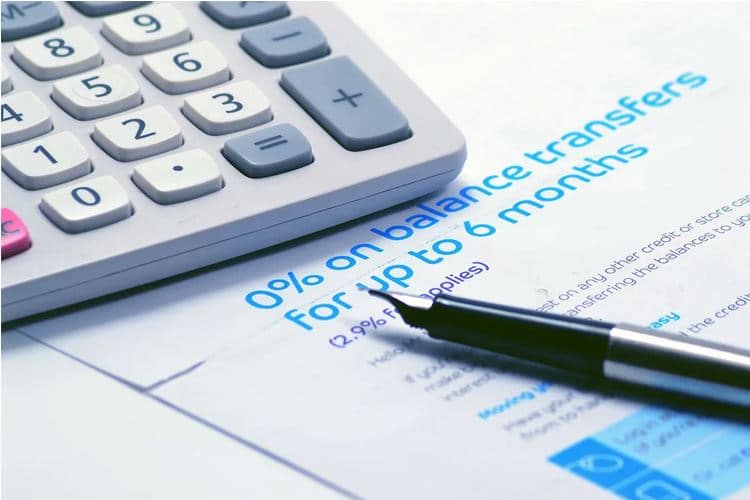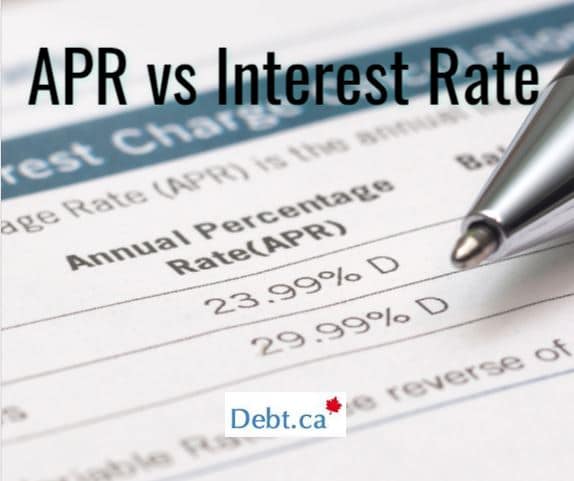Credit card balance transfers may be a good alternative to many other debt relief options. If you’re currently stuck in credit card debt and feel like you just can’t move on because of interest charges, you may be wondering what you can do to settle it. It can be tough to climb out, especially if you have several thousand dollars worth of high-interest debts on your credit card.
Fortunately, there are available balance transfer credit cards now that offer low introductory APRs (Annual Percentage Rate) that can help you settle your debts. If you want some tips to help you get ahead of these transfers, you’ve come to the right article. Read on below to find out more about Credit Card Balance Transfers.
What Is a Credit Card Balance Transfer?
A credit card balance transfer is a transaction wherein a current debt is transferred from one account to another. If you are paying a high-interest debt, this move can help you save a significant amount of money on interest charges. However, it must be done strategically and correctly.
For example, if your debt is transferred to a credit card with a 0% introductory APR offer on balance transfers, it could potentially be paid off without interest.
However, balance transfers have certain limitations and costs, though. In general, you will need to pay a balance transfer fee that’s usually 3% up to 5% of the total amount transferred. You might not be able to transfer your full balance if the limit of your balance transfer card is low.
How Do Credit Card Balance Transfers Work?
A credit card balance transfer can be completed in a few easy steps. But take note that the process may vary depending on the card issuer.
You can transact a balance transfer over the phone by calling the customer service number that can be found at the back of your card. But for the majority, the most preferred way to do balance transfer is done online.
Here’s how you can do a balance transfer online:
- Log in to your credit card account and choose a balance transfer offer.
- Read and evaluate the terms of the offer. It will include regular purchase APR, length of the intro APR period, and any balance transfer fees.
- Give the details of your transfer, such as the account number of the card and the amount of debt you want to transfer.
- Lastly, double-check and verify the information you entered. Make sure they’re correct. Once confirmed, submit the transfer.
Good Practices to Observe When Dealing With Credit Card Balance Transfers
It’s important to note that while balance transfers can help pay off debt, they are not a magic solution. For this reason, you need to commit yourself to get out of debt. Otherwise, you might end up with more debt.
To prevent this from happening, here’s what you need to do when dealing with credit card balance transfers.
Review Your Current Credit Card Balances and Interest Rates.
You need to assess your current situation before you do a balance transfer.
You have to check your current balances and interest rates. The interest rates on your credit card are typically expressed as APR. You will need this information so you can choose the best card for your balance transfer.
Moreover, find a balance transfer card with a lower interest rate than what you’re already paying.
Apply for a Card That Offers an Introductory 0% Apr on Balance Transfers or Use an Offer on Your Current Card.
To avail or qualify for credit cards with this kind of offer, you need to have a good or excellent credit score of at least 690, following the FICO standards. Take heed that same-issuer transfers aren’t allowed.
For example, if you want to transfer a balance from an HSBC card, you can’t move it to another HSBC card.
Initiate the Balance Transfer.
If you’re doing a balance transfer via phone or online, you have to provide information about the debt you want to transfer, such as the issuer’s name, the account information, and the amount of debt.
Sometimes, it’s allowed to use convenience checks when initiating balance transfers, or the checks issuers send you in the mail. But before using one, make sure to read the terms first and see if it will count as a balance transfer and its possible interest rate.
Wait for the Balance Transfer to Get Approved.
The issuer directly pays off your old account once the balance transfer is approved. This normally takes two weeks or longer. Your old balance, including the balance transfer fee, will be visible in your new account.
Settle Down the Balance.
You’ll be responsible for making monthly payments on that account once the balance is transferred to your new card. If you pay it down during the introductory 0% APR period, you can save a lot of money.
Read the Fine Print and Understand the Terms and Conditions
You must read the terms and conditions and fine print before you push through with a balance transfer. Make sure that the transfer is financially beneficial on your end.
Most of the time, people get excited when signing a deal that they don’t even bother reading the fine print. Make sure you read and understand everything in every contract you sign. Ignoring such details can land you in difficult situations that would have otherwise been avoided.
For instance, if the new APR is 10% and the fee is 3% of the balance, you will not benefit from the transfer, if your old card’s APR is 11%. If the balance transfer card has a transfer fee, calculate how much you can save on interest. Also, determine how much it will cost to make the transfer. This can determine whether it will benefit you.
To get the most out of an offer, stay on top of the specifics. Also, it’s an excellent idea to check if the card provider sets limitations on the following:
- Credit limits. Take note that credit limits are set according to the evaluation results on your credit and other related factors. You may not be approved for a limit that will cover the amount of balance you want to transfer. Also, some issuers only allow a maximum balance transfer.
- Restrictions with certain cards. If you want to transfer a balance to an HSBC Double Cash Card, you can’t transfer balances from any HSBC cards you already have.
How Does a Payment Work When You Make a New Purchase Using Your New Balance Transfer Card?
A balance transfer card might be a good asset, but things can get complicated when you use it for new purchases, given that the introductory 0% APR offer is only applicable to balance transfers. It means that new purchases will incur the standard purchase APR on your credit card.
If you only pay the minimum, the money goes to the balance with the lowest interest rate. On the other hand, an above minimum payment will go to the balance with the highest APR.
For example, you transferred your remaining debt to a new card with an introductory 0% APR on balance transfers and have a minimum payment of $30. If you spend $300 on new purchases and make a payment, the first $30 will go to the balance you transferred, not to the balance you just incurred from new purchases.
You’d need to pay off the amount you spent plus the minimum payment if you want to pay off what you borrowed in full to avoid interest altogether. That’s a total of $330. Further, an additional fee will directly go to the balance with no interest that you transferred.
What Should You Look for in a Good Balance Transfer Credit Card?
Since the goal of a balance transfer is to pay off your debt and save money, you need to look for a card that can minimize your costs.
An excellent balance transfer credit card has three big zeroes:
- 0% introductory APR offer for balance transfers
- 0% balance transfer fee
- $0 annual fee
This kind of card can help you pay off your debt without spending money on fees and interest rates. If this is not an option for you, a card with a 0% introductory offer on balance transfers and no annual fee is your next best option. Know that interest charges can add up quickly and are often more costly compared to one-time 3%- 5% fees.
What is Credit Card Balance Protection Insurance?
Repaying debt can be tough, especially when you run into financial difficulties. Whether you’ve been laid off from work, you become ill, or you suffer a critical illness, balance protection is supposed to be there to save the day. Similar to other forms of insurance, you’ll have to pay an insurance premium to be covered. Your insurance premium is based on your outstanding balance – the more you owe, the higher your premiums.
Here’s how TD Bank pitches its credit card balance insurance for TD credit cards: “TD Balance Protection Plus and TD Balance Protection Insurance are two credit protection insurance products designed to assist in managing your credit obligations on your TD Credit Card(s) in the event of a covered involuntary unemployment, loss of self-employment income, total disability, loss of life, dismemberment, critical illness or disability requiring hospitalization.”
What’s the Catch?
Just like other forms of insurance, credit card companies wouldn’t be selling balance protection insurance unless they turned a profit. If you’re considering getting balance protection insurance, it’s important to read the fine print, as all plans aren’t created equal. The events that are covered vary by credit cards companies; for example, you’ll have to fork over higher premiums for TD Balance Protection Plus if you want additional coverage for your spouse and for disability requiring hospitalization.
Not only do the events vary between credit card companies, but the coverage also varies, too. Some credit balance companies only cover your minimum payment, while others will pay off your entire balance. For example, if your credit card company only covers the minimum balance, you could be paying hundreds of dollars a year in insurance premiums for covering your minimum balance – 2 percent or $20, whichever is greater – talk about overpriced insurance policy!
Similar to mortgage insurance, balance protection insurance lacks the flexibility of disability or critical illness insurance. With the latter, you can use your insurance payout as you see fit, but with balance protection insurance you’re limited to only covering your outstanding balance. Although credit card debt is one of the highest rate forms of debt, there are other forms of debt like payday loans that may make sense to pay off first.
Self-Insurance
In most cases, you’re better at self-insuring yourself against life’s curveballs. The easiest way to self-insure yourself is with adequate life insurance, disability insurance, and an emergency fund (three to six months’ living expenses). With those in place, you should have enough of a financial cushion to avoid balance protection insurance altogether.
Should I Do a Balance Transfer?
If you can’t qualify for a good 0% APR offer or can manage to pay off a balance in, say, three months or sooner, settling down your debt as quickly as possible might be the most cost-effective option for you.
If you don’t mind paying some interest and want a higher limit, a personal loan or single payment loan could be a good match. You can pre-qualify for one to check how much you can borrow along with the interest rate before accepting an offer.
Generally, a credit card balance transfer is the most valuable option you can resort to. If you qualify for a card with a 0% introductory APR on balance transfers and if you need months to settle your high-interest debts, then this is the way to go. Such a card can give you an edge when paying off your balances and save you plenty of interest.
Takeaway
Credit card balance transfers can help you start anew with a lower APR. Hopefully, you’ll get ahead on paying off your debt. But, if you’re not careful, it can be a double-edged sword. As such, choose a card with terms that will set you up for success. And remember to read all the fine print. You need to make sure that you’re committing to paying off debt and not the other way around.









